Who Falsified the Gospel? Does Matthew 28:19 Prove Trinity? . . .Faith or Foolishness? As a former Pentecostal believer and a leader in that earnest Christian denomination, my heart went out to the family of Mark Randall "Mack" Wolford, a Pentecostal pastor from West Virginia, who died on May 29th, 2012 after being bitten by a rattlesnake he owned. Mark was just 44 years old. In a terrible twist of fate, that sincere preacher and Church theologian succumbed to the same horrible death as did his father years before him. As a former Pentecostal believer and a leader in that earnest Christian denomination, my heart went out to the family of Mark Randall "Mack" Wolford, a Pentecostal pastor from West Virginia, who died on May 29th, 2012 after being bitten by a rattlesnake he owned. Mark was just 44 years old. In a terrible twist of fate, that sincere preacher and Church theologian succumbed to the same horrible death as did his father years before him.
According to Pastor Mark’s testimony, he watched his 39 year-old father die in a church building after a Sunday worship service, during which the rattlesnake that he handled in harmony with the New Testament dictates, injected its deadly venom into his bloodstream. Mr. Wolford vowed on his father’s deathbed to “keep the faith going” and made it the mission of his life to promote the rattlesnake handling worship services in his native West Virginia and the surrounding states as well.
"Mack" Wolford was known across Appalachia as a daring man of strong religious convictions. He believed the Bible mandates that Christians handle serpents to test their faith in God — and that, if bitten, they trust in God alone to heal them. His Bluefield home had a spare bedroom filled with at least eight venomous snakes: usually rattlers, water moccasins and copperheads.
He was passionate about helping churches in nearby states, including North Carolina and Tennessee, where the practice is illegal, to start their own serpent-handling services. "I promised the Lord I'd do everything in my power to keep the faith going," he said in October. "I spend a lot of time going a lot of places that handle serpents to keep them motivated. I'm trying to get anybody I can get involved.”
That fateful Sunday's gathering started as a festive outdoor worship service at Panther Wildlife Management Area, a state park roughly 80 miles west of Bluefield, West Virginia. Several teasers posted on Wolford's Facebook page encouraged people to attend. About 30 minutes into the service, his sister said, Wolford had been passing a yellow timber rattlesnake to other church members and his mother. He then laid it on the ground and sat down next to the snake. The rattler proceeded to bite him on the thigh.
Wolford was taken to a relative's house in Bluefield to recover, as he always had when suffering from previous snake bites. But Wolford's condition worsened progressively. Paramedics transported him to a Bluefield hospital, where he was pronounced dead early Monday morning.
It is profoundly sad that a young life, full of vigor and talent, was snuffed out as a result of a tragic accident. It is doubly sad that the accident that should never have happened in the first place occurred due to a misplaced faith. Pastor Randall Wolford belongs among the daring and sincere souls who accept for the gospel truth itself the passage in the Book of Mark that seems to be listing the handling of poisonous snakes among the veritable sings of our salvation and the power of believers in Jesus Christ.
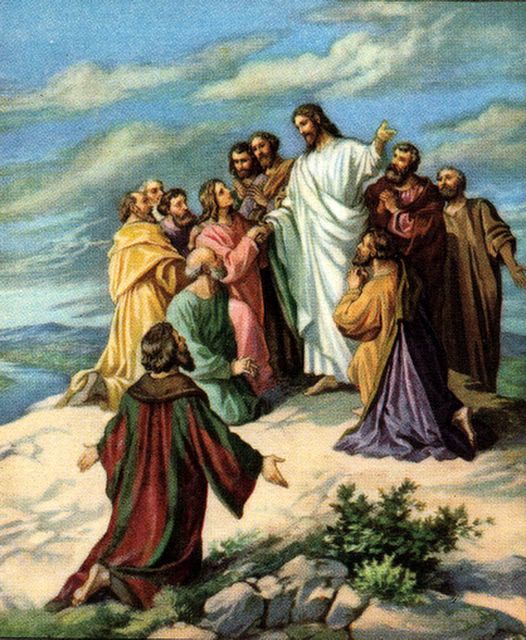 Here is the passage in question: “He who believes and is baptized will be saved; but he who does not believe will be condemned. And these signs will follow those who believe: In My name they will cast out demons; they will speak with new tongues; they will take up serpents; and if they drink anything deadly, it will by no means hurt them; they will lay hands on the sick, and they will recover.” (Mark 16:16-18) – In addition to playing with snakes and drinking poison, the concluding passage of Markan Gospel endorses speaking in other tongues and emphasizes baptism into the Church as one of the prerequisites for our salvation. Here is the passage in question: “He who believes and is baptized will be saved; but he who does not believe will be condemned. And these signs will follow those who believe: In My name they will cast out demons; they will speak with new tongues; they will take up serpents; and if they drink anything deadly, it will by no means hurt them; they will lay hands on the sick, and they will recover.” (Mark 16:16-18) – In addition to playing with snakes and drinking poison, the concluding passage of Markan Gospel endorses speaking in other tongues and emphasizes baptism into the Church as one of the prerequisites for our salvation.
The shocking truth of the matter is that this particular “pericope” (biblical passage) is not found in the Greek text of the earliest and most reliable manuscripts of the Gospel! Among the textual scholars of the New Testament, Mark 16:9-20 is widely recognized to be a much later addition to the original text of the book! The only debatable point among the serious scholars today is whether the interpolation was perpetrated at the end of the second century C.E. or even later, around 6th century C.E.!
Thus, for instance, the earliest complete manuscripts of Mark, such as Codex Sinaiticus and Codex Vaticanus, (produced in the 4th century C.E.), completely omit the last twelve verses of Mark 16. In Textual Commentary on the Greek New Testament Bruce Metzger states: "Thus, on the basis of good external evidence and strong internal considerations it appears that the earliest ascertainable form of the Gospel of Mark ended with 16:8. Three possibilities are open: (a) the evangelist intended to close his Gospel at this place; or (b) the Gospel was never finished; or, as seems most probable, (c) the Gospel accidentally lost its last leaf before it was multiplied by transcription." (p. 126).” It is obvious that Jesus Christ never really uttered those “charismatic” words about serpents, tongues and other similar things.
In other words, at some point in time the ending of Markan narrative began to appear to the faithful within the early Church as too abrupt and inconclusive when compared with other Gospels, such as Matthew and Luke, for example, which supply many additional details concerning the post-resurrection activities of Jesus and his disciples. And so, in order to bring the Gospel According to Mark up to par with other canonical narratives, our dear Church theologians knocked together a “suitable” ending to Markan story! Undoubtedly, none of them could have imagined in their wildest dreams that thousands of years into the future, people would be needlessly dying of poisonous snakes’ bites as a direct result of their “pious” endeavors!
Faith Through Forgery? . . .
 Whether one chooses to believe that Mark 16:9-20 was part of the original text or not will not seriously undermine the foundations of one’s faith. Unless one is a die-in-the-wool Pentecostal speaker in tongues, who believes that everybody else should embrace the same approach to faith and be baptized into the Pentecostal denomination in order to be saved, the implications of knowing that Mark 16:9-20 is a much later interpolation into the text has few dramatic repercussions. Whether one chooses to believe that Mark 16:9-20 was part of the original text or not will not seriously undermine the foundations of one’s faith. Unless one is a die-in-the-wool Pentecostal speaker in tongues, who believes that everybody else should embrace the same approach to faith and be baptized into the Pentecostal denomination in order to be saved, the implications of knowing that Mark 16:9-20 is a much later interpolation into the text has few dramatic repercussions.
There are a few significant texts within the body of the New Testament, however, whose legitimacy and authenticity can either make or break the very foundation of Christian faith! Today we present to your attention a scholarly exposition of one of the most brazen forgeries within the New Testament text, whose influence has shaped the faith of billions throughout the ages of the Church’s existence! The passage under consideration is one of the stoutest pillars of the Church’s sacred Dogma of the Most Blessed Trinity! Please, examine the evidence and make up your own mind if the text is a forgery or part of the original document!
A New and Strange god . . .
The grand theme of the cosmic war that has engulfed our little blue planet since our first parents sinned in the Garden of Eden has always revolved around the issue of true worship of One God versus a visceral polytheism of the world! Starting in the 4th century CE, the Catholic Church created her own multi-headed, three-personed god of the “Most Blessed Trinity.” That century became the turning point for the Jewish-Gentile relationship within the ranks of those who embraced Jesus of Nazareth as the Messiah of Israel. As the only true monotheists on the face of the Earth, the Jews could not and simply would not accept any other so-called god alongside the Holy One of Israel!
The historical Christendom, on the other hand, has been content to worship “their own god,” forged by the Catholic theologians in their own pagan image! Along with their predecessors, Protestants inherited the deity of the apostate Catholic Church and have been earnestly worshiping it till the present hour!
Believe it or not, but the controversy surrounding the object of our worship, whether it is the One God of Israel or the three-faced pantheon of Trinity, has been steadily intensifying as we draw to the close of the Earth’s history and the glorious coming of Israel’s Messiah! During the last two millennia of the Church’s existence it has been zealously scouring the Hebrew Scriptures, (what they pejoratively call the Old Testament), with the goal of finding some undeniable proof for the reality of the god they created through the exercise of some creative pagan exegesis (textual interpretation).
Many long and futile centuries later, all the honest evangelical and mainstream theological bodies have finally acknowledged the inescapable fact that on the basis of the Hebrew Bible alone no one could ever prove that God of the Jews (God of the Bible) is a trinity and not, in fact, a unique and absolutely One God of Israel! The next logical step, of course, was to prove the Romish doctrine of Trinity from the writings of the New Testament! Can it be done? Let us examine one such example!
The Great Commission of Matthew 28:19
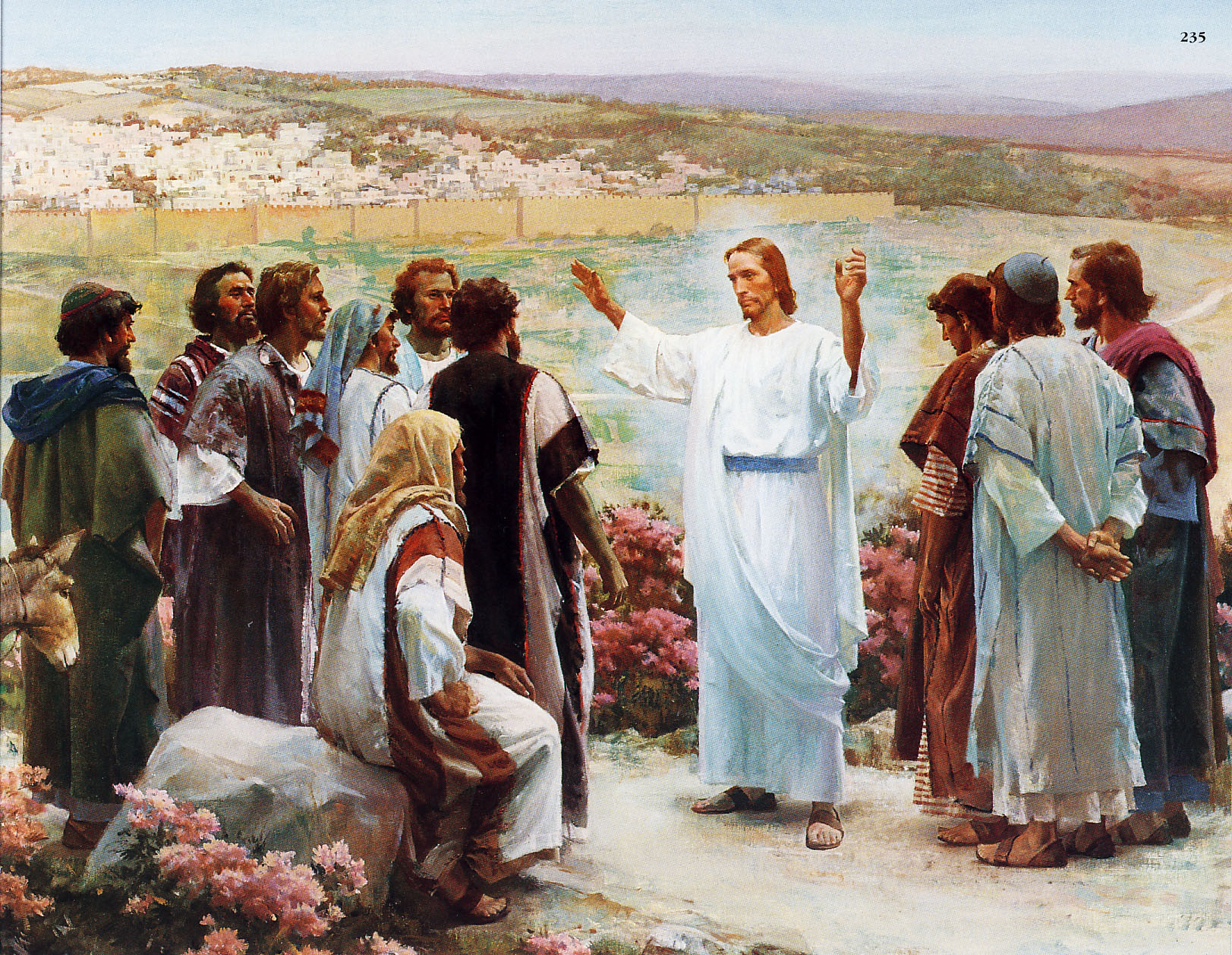 Perhaps the most obvious and powerful New Testament passage that may be used to construe the existence of the triune god of Trinity is found in the gospel according to Matthew. In this text the risen Jesus is shown giving his disciples his final exhortations before ascending to the right hand of the Majesty in Heaven, the LORD God of Israel! I have heard many sermons on this passage. The central point in almost every one of them is that this passage constitutes the paramount command given to the Christian missionaries by their Lord and Master. It stands to reason, therefore, that just before being taken away from His emissaries, Jesus Christ distills his words in such a way that he may convey to them the most important things of all. Perhaps the most obvious and powerful New Testament passage that may be used to construe the existence of the triune god of Trinity is found in the gospel according to Matthew. In this text the risen Jesus is shown giving his disciples his final exhortations before ascending to the right hand of the Majesty in Heaven, the LORD God of Israel! I have heard many sermons on this passage. The central point in almost every one of them is that this passage constitutes the paramount command given to the Christian missionaries by their Lord and Master. It stands to reason, therefore, that just before being taken away from His emissaries, Jesus Christ distills his words in such a way that he may convey to them the most important things of all.
Here is the text: “Then the eleven disciples went away into Galilee, to the mountain which Jesus had appointed for them. When they saw Him, they worshiped Him; but some doubted. And Jesus came and spoke to them, saying, “All authority has been given to Me in heaven and on earth. Go therefore and make disciples of all the nations, baptizing them in the name of the Father and of the Son and of the Holy Spirit, teaching them to observe all things that I have commanded you; and lo, I am with you always, even to the end of the age.” Amen.” (Matthew 28:18-20) –
I have adduced the text in its proper context, since I would hardly want to be accused of “a creative proof-texting,” – an unfortunate practice common in many Christian circles today. As you can see, all the eleven disciples are present and accounted for in this episode. The heart of the matter, however, is the baptismal formula, which very forcefully and explicitly commands disciples to baptize in the one name of some three deities: “. . . baptizing them in the name of the Father and of the Son and of the Holy Spirit . . .” This text is “the crown jewel” in any and every attempt to prove that the Christian god of Trinity is the same God that the Jews had worshipped for thousands of years prior to “the new and fuller revelation given through the Church.” Is that really so?
Acts 2:37-39
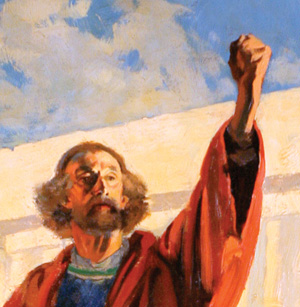 Let us take a careful look at the early church’s mission as depicted on the pages of the Bible and see if they ever followed the injunction contained in Matthew 28:19. Without a doubt, the greatest showdown between the disciples of Jesus and the rest of their Jewish compatriots happened on the memorable day of Pentecost. On that day, according to the Book of Acts, the God of Israel poured out His Holy Spirit on Jesus’ disciples gathered in Jerusalem for that very reason. After Peter delivers his most impassioned and powerful sermon recorded on the sacred pages, the pious monotheists present in Jerusalem for the Feast of Passover ask him a vital question: “Now when they heard this, they were cut to the heart, and said to Peter and the rest of the apostles, “Men and brethren, what shall we do?” (Acts 2:37) Let us take a careful look at the early church’s mission as depicted on the pages of the Bible and see if they ever followed the injunction contained in Matthew 28:19. Without a doubt, the greatest showdown between the disciples of Jesus and the rest of their Jewish compatriots happened on the memorable day of Pentecost. On that day, according to the Book of Acts, the God of Israel poured out His Holy Spirit on Jesus’ disciples gathered in Jerusalem for that very reason. After Peter delivers his most impassioned and powerful sermon recorded on the sacred pages, the pious monotheists present in Jerusalem for the Feast of Passover ask him a vital question: “Now when they heard this, they were cut to the heart, and said to Peter and the rest of the apostles, “Men and brethren, what shall we do?” (Acts 2:37)
As the chief of Jesus’ apostles and one of the eleven disciples who received Christ’s clear command concerning baptism and the rest of their mission, Peter answers the question of his Jewish brothers the following way: “Then Peter said to them, “Repent, and let every one of you be baptized in the name of Jesus Christ for the remission of sins; and you shall receive the gift of the Holy Spirit. For the promise is to you and to your children, and to all who are afar off, as many as the Lord our God will call.” (vv. 38-39) – Quite obviously, the Apostle Peter, filled to the brim with the presence, power and wisdom of the Holy Spirit, forgets completely Jesus’ final injunction and exhorts his hearers to be baptized in the name of Jesus alone! Where is the famous Trinitarian formula for believer’s baptism in this case? Has Peter forgot, ignored or, perhaps, never heard such an injunction to begin with?
By the way, what does it mean to be baptized in the name of Jesus? Does it mean that you now become a part of some new organization such as Church? God forbid! Please, take notice that all of Peter’s hearers on that memorable day were the worshippers of One God of Israel, who came to Jerusalem to honor their faith in Him through the ritual sacrifice of the Paschal lamb. Viewed in its proper context, the baptism advocated by the head apostle has nothing to do with joining a newly-formed organization called Church! The baptism in Jesus’ name acknowledges that the God of Heaven has made a gracious provision for the redemption of humankind in the person and mission of the Perfect Lamb of God, Yeshua HaMashiah. Nothing can be further from the truth of the biblical text and Peter’s mind than inviting the faithful Jews to embrace another person of Trinity or acknowledge another god beside their HaShem!
Based on the evidence of the text of Acts 2 alone, one could rest one’s case in showing that Matthew 28:19 was, in all probability, a much later addition to the Greek Text of Matthean manuscript, and, therefore, totally, false! We should understand that it would not be a sole such addition by any means! Gerald Sigal writes in his book Trinity Doctrine Error/Jewish Analysis: “The formula of baptism ‘in the name of the Father, and of the Son, and of the Holy Ghost’ (Matt. 28:19) is a later addition to the Gospel of Matthew and a further stage in the developing of the ‘Holy Spirit’ into a person. . . While this statement is not originally part of Matthew’s text it does point in the direction in which some branches of second century Christian theological speculation were moving.” (p.15)
Sadly, our Greek-speaking Church fathers have proven to be a very untrustworthy bunch of people when it came to preserving the sacred text of the New Testament. Unlike their Jewish counterparts, they have been more than willing to temper with the text in order to substantiate the fickle doctrines of human invention. Having said that, however, we will proceed to hammer a few more shining nails in the coffin of the spurious text of Matthew 28:19!
Believers in Samaria
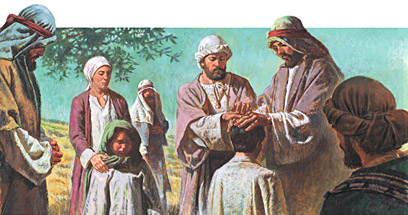 When the apostles heard that people in Samaria accepted Jesus as Israel’s Messiah, they sent Peter and John to instruct them in the way of the Lord. Please, pay a close attention to the mode of baptism that was administered to the believers in this passage: “Now when the apostles who were at Jerusalem heard that Samaria had received the word of God, they sent Peter and John to them, who, when they had come down, prayed for them that they might receive the Holy Spirit. For as yet He had fallen upon none of them. They had only been baptized in the name of the Lord Jesus. Then they laid hands on them, and they received the Holy Spirit.” (Acts 8:14-17) – When the apostles heard that people in Samaria accepted Jesus as Israel’s Messiah, they sent Peter and John to instruct them in the way of the Lord. Please, pay a close attention to the mode of baptism that was administered to the believers in this passage: “Now when the apostles who were at Jerusalem heard that Samaria had received the word of God, they sent Peter and John to them, who, when they had come down, prayed for them that they might receive the Holy Spirit. For as yet He had fallen upon none of them. They had only been baptized in the name of the Lord Jesus. Then they laid hands on them, and they received the Holy Spirit.” (Acts 8:14-17) –
Is there any mention here of the special Trinitarian baptismal formula? Perhaps, those who preached in Samaria completely forgot about Jesus’ specific instruction just before his ascension or simply ignored them just like Peter did before? I hope you begin to see the ridiculousness of the situation with the passage in Matthew 28:19. As before, the only logical and biblical conclusion is that the text of Matthew 28:19 must have been inserted into the gospel by the Trinitarian Church leaders sometime after the year 325 CE!
Cornelius’s Baptism
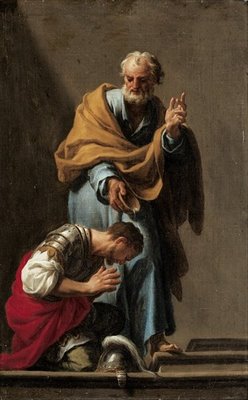 At this point in our discussion I would love to give the Apostle Peter another chance at getting his baptismal formula right once and for all! Perhaps he was too overwhelmed on the Day of Pentecost and totally forgot the explicit command of his Lord to baptize in the name of a three-headed god? Is this such an improbable suggestion? If you are anything like me, it sounds absurd already! However, so much of the religion called Christianity either borders on the absurd or is an outright forgery that we have to be ready to ask and answer the most bizarre of questions! At this point in our discussion I would love to give the Apostle Peter another chance at getting his baptismal formula right once and for all! Perhaps he was too overwhelmed on the Day of Pentecost and totally forgot the explicit command of his Lord to baptize in the name of a three-headed god? Is this such an improbable suggestion? If you are anything like me, it sounds absurd already! However, so much of the religion called Christianity either borders on the absurd or is an outright forgery that we have to be ready to ask and answer the most bizarre of questions!
The Book of Acts relates another incident when the chief of Christ’s apostles gets to baptize a group of people. The setting is in the house of a certain Gentile named Cornelius. Peter reveals to the Roman centurion and his entire house the good news of God. The Holy One of Israel honors his servant’s preaching and anoints the entire gathering with His Holy Spirit: “While Peter was still speaking these words, the Holy Spirit fell upon all those who heard the word. And those of the circumcision who believed were astonished, as many as came with Peter, because the gift of the Holy Spirit had been poured out on the Gentiles also. For they heard them speak with tongues and magnify God.” (Acts 10:44-46)
Having witnessed God’s gracious gift of the Holy Spirit to these Gentile believers in the LORD God of Israel, Peter ordains that they should also be baptized. This time around he is sure to use the proper Trinitarian formula, right? “Then Peter answered, “Can anyone forbid water, that these should not be baptized who have received the Holy Spirit just as we have?” And he commanded them to be baptized in the name of the Lord. Then they asked him to stay a few days.” (vv. 46-48) – For some inexplicable reason, the great apostle administers the central rite of passage into the assembly of Messianic believers disregarding the sacred formula conveyed to the eleven disciples by Jesus himself all over again! Why is that? Was Peter just a forgetful guy; was he ignoring Jesus’ parting, and, therefore, most significant words concerning their mission; or, perhaps, Jesus never uttered the fateful Trinitarian formula recorded in Matthew 28:19? What do you think?
Believers’ Baptism in Ephesus
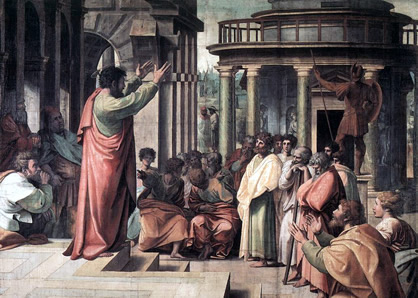 Allow me to bring in just one more witness in the case of fraudulent insertion of Matthew 28:19 into the biblical text. This witness will speak for itself and is very self-explanatory as well: “And it happened, while Apollos was at Corinth, that Paul, having passed through the upper regions, came to Ephesus. And finding some disciples he said to them, “Did you receive the Holy Spirit when you believed?” So they said to him, “We have not so much as heard whether there is a Holy Spirit.” 3 And he said to them, “Into what then were you baptized?” So they said, “Into John’s baptism.” (Acts 19:1-3) - As we know from the Bible, John’s baptism was the immersion of repentance. The Apostle Paul, therefore, is keen on having these guys baptized the proper way! Allow me to bring in just one more witness in the case of fraudulent insertion of Matthew 28:19 into the biblical text. This witness will speak for itself and is very self-explanatory as well: “And it happened, while Apollos was at Corinth, that Paul, having passed through the upper regions, came to Ephesus. And finding some disciples he said to them, “Did you receive the Holy Spirit when you believed?” So they said to him, “We have not so much as heard whether there is a Holy Spirit.” 3 And he said to them, “Into what then were you baptized?” So they said, “Into John’s baptism.” (Acts 19:1-3) - As we know from the Bible, John’s baptism was the immersion of repentance. The Apostle Paul, therefore, is keen on having these guys baptized the proper way!
We are also sure that this great theologian, to whose pen belongs the greater portion of the New Testament, knows what he is doing and will not screw up the ritual, right? Here is the text: “Then Paul said, “John indeed baptized with a baptism of repentance, saying to the people that they should believe on Him who would come after him, that is, on Christ Jesus.” When they heard this, they were baptized in the name of the Lord Jesus. And when Paul had laid hands on them, the Holy Spirit came upon them, and they spoke with tongues and prophesied. Now the men were about twelve in all.” (vv. 4-6) - Once again, and for some mysterious reason, even such great thinker, apostle and theologian as Paul administers the baptism to the twelve believers without reciting the sacred formula given to the apostolic missionaries by the risen Lord himself!
Historical/Extra biblical Evidence
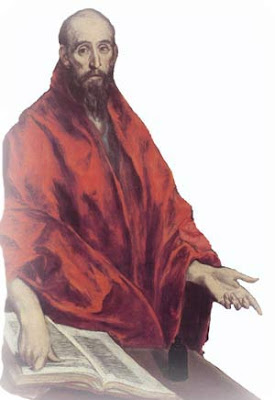 What makes our today’s presentation even more exciting is that we have an ample extra-biblical proof for the fact that Matthew 28:19 is a fourth-century forgery, inserted into the Gospel’s text to back up the emerging Dogma of the “Most Blessed Trinity”! Eusebius of Caesarea (c. 260 – 340 CE) cites Matthew 28:19 at least twenty-one times in his writings! Every single time, his quotation lacks the Trinitarian formula! Please, note the dates of the composition for Eusebius’ works adduced below! In his Ecclesiastical History, written circa 324 C.E., this Church Father explains:"But the rest of the apostles, who had been incessantly plotted against with a view to their destruction, and had been driven out of the land of Judea, went unto all nations to preach the Gospel, relying upon the power of Christ, who had said to them, “Go ye and make disciples of all the nations in my name.” What makes our today’s presentation even more exciting is that we have an ample extra-biblical proof for the fact that Matthew 28:19 is a fourth-century forgery, inserted into the Gospel’s text to back up the emerging Dogma of the “Most Blessed Trinity”! Eusebius of Caesarea (c. 260 – 340 CE) cites Matthew 28:19 at least twenty-one times in his writings! Every single time, his quotation lacks the Trinitarian formula! Please, note the dates of the composition for Eusebius’ works adduced below! In his Ecclesiastical History, written circa 324 C.E., this Church Father explains:"But the rest of the apostles, who had been incessantly plotted against with a view to their destruction, and had been driven out of the land of Judea, went unto all nations to preach the Gospel, relying upon the power of Christ, who had said to them, “Go ye and make disciples of all the nations in my name.”
He does the same in his “Demonstratio Evangelica,” composed around 314 CE and later in “Oration in Praise of Emperor Constantine,” written circa 335 CE! In short, Eusebius cites Matthew 28:19 many times in works written between 300-336 C.E. (as in his “Commentaries on the Psalms” and “Commentaries on Isaiah,” his “Demonstratio Evangelica,” and “Theophania,” his “Ecclesiastical History,” and “Oration in Praise of Emperor Constantine,") and he always quotes it as “Go ye, and make disciples of all nations in my name.”
Bishop Eusebius was a staunch supporter of the “mainline” Christianity of his time. He was firmly within the orthodox camp of Trinitarians. He lived close to the great Christian library of Caesarea, collected by Origen and Pamphilus, having access to codices of the Gospels containing the disputed verse, which were much older than anything available to us today! It is only sometime after Eusebius had attended the Council of Nicaea in 325 C.E. that his writings began to contain any reference to the well-known Trinitarian formulation of Jesus’ words.
Only in two of his works, composed very close to the time of his death, did Eusebius expand his famous quotation to include the Trinitarian wording! That version is found in his works entitled “Against Marcellus of Ancyra” and “About the Theology of the Church.” The expanded reading is also found in a letter addressed by Eusebius, well after the Council of Nicaea, to his home church in Caesarea. He may have included the new Trinitarian formula in his quotation of Matthew 28:19 out of conformity to the Church’s doctrine and to avoid the common and dreaded charge of heresy. Just as easily, though, the expanded version could have been the work of interpolation perpetrated by later copyists of his letter.
Conclusion
When all is said and done, Matthew 28:19 is the only text within the canon of the New Testament where the Trinitarian formula for Christian baptism appears! Interestingly enough, however, none of the textual instances where the actual practice of baptism is described in the New Testament cites the “sacred formula” even obliquely. In fact they all make it abundantly clear that neither Peter nor Paul, nor anybody else in the first three centuries of the Messianic Judaism knew of the existence of such formula!
When studied in a cool, unprejudiced and methodic manner, the books of the New Testament corroborate the conclusion that many of its texts have been either altered or inserted with the view of supporting the official dogmas of the Great Romish Church. Thus, Mark 16:9-20, Matthew 28:19, I John 5:7, and many other NT passages are clear examples of textual forgeries committed by the Greek-speaking Gentiles in their zeal to prop up the humanly-crafted doctrines and beliefs of the apostate church!
The text of Matthew 28:19 is designed to tell us that God is, in fact, a compound unity or three divine bodies of one essence. However, since the text itself is a brazen-faced forgery, its testimony is just as null and void as the belief in Trinity itself!
We encourage you to go the length and breadth of the New Testament and examine carefully all the passages related to the practice of Messianic baptism to see that the Trinitarian passage of Matthew 28:19 sticks out like a proverbial sore thumb amidst the clear witness of the rest of the Canon!
Just imagine how many countless generations of sincere Christians have dedicated their lives to an obvious falsehood! Is it not the high time that Christianity has abandoned its spurious beliefs and practices, such as Trinitarian idolatry, humbled itself before the Living God and come back to the LORD God of Israel and His faithful monotheists, the Chosen People of Israel?!
So, what is the Great Commission for your life? Does it come from a falsified passage of the New Testament or from the Hebrew Scriptures that state: “You are My witnesses,” says the LORD, “And My servant whom I have chosen, that you may know and believe Me, and understand that I am He. Before Me there was no God formed, nor shall there be after Me. I, even I, am the LORD, and besides Me there is no Savior . . . Therefore you are My witnesses,” says the LORD, “that I am God . . .” (Is. 43:10-12) and “Thus says the LORD, the King of Israel, and his Redeemer, the LORD of hosts: ‘I am the First and I am the Last; besides Me there is no God. . . Do not fear, nor be afraid; have I not told you from that time, and declared it? You are My witnesses. Is there a God besides Me? Indeed there is no other Rock; I know not one.’” (Is. 44:6-8)
 I hope that none of our readers forfeit their lives either to a poisonous snake’s bite or in the trap of idolatry and apostasy of the Church! I also hope that you join us for more mind-boggling discoveries from the pages of the Sacred Writings! May the Holy One of Israel bless you and keep you! Amen! I hope that none of our readers forfeit their lives either to a poisonous snake’s bite or in the trap of idolatry and apostasy of the Church! I also hope that you join us for more mind-boggling discoveries from the pages of the Sacred Writings! May the Holy One of Israel bless you and keep you! Amen!
Till next time – Shalom!
|